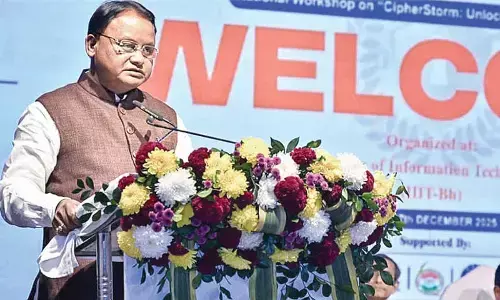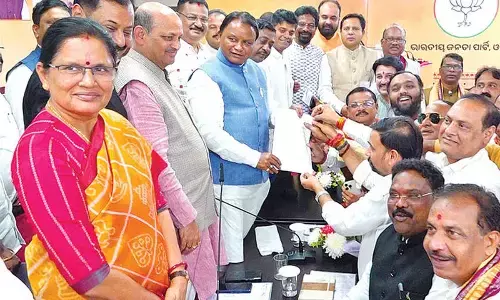HNSS to boost cotton farming

Cotton production and acreage is now on a downward trend due to a pink bollworm plague striking and damaging the crop and adversely affecting its yield In the past, the extent of cotton cultivation was in a mere 2,000 hectares in the district
Anantapur: Cotton production and acreage is now on a downward trend due to a pink bollworm plague striking and damaging the crop and adversely affecting its yield. In the past, the extent of cotton cultivation was in a mere 2,000 hectares in the district.
After the introduction of BT cotton, cultivation of cotton saw a revolution and the acreage gradually increased in the district increased to 70,976 hectares in 2014-15 year. The highest cotton production in the state is in Guntur and Krishna districts. Cotton farmers feel that good days for cotton would come after the completion of the HNSS Project. The district will get assured water for the various crops and is expected to change the landscape of the district. Assured water can boost cotton crop prospects as well.
Agriculture scientist John Sudheer told ‘The Hans India’ that 2015-16 and 2016-17 year was very bad for cotton due to the severe drought conditions on one hand and the pest called as bollworm which struck the plants on the other hand. The acreage dwindled to 22,000 hectares.
The best year for cotton was in 2014-15 when farmers went for the drought resistant crop in both red and black soils and registering the highest coverage of 70,976 hectares in Anantapur and 2.78 lakh hectares in Kurnool. The farmers earned handsomely at the rate of Rs 5,000 per quintal and even if a minimum four quintals were produced in a single acre, they would earn Rs 20,000 per acre.
However, the decline started from 2015-16 year when the acreage dropped down to 66,000 hectares and in the subsequent year to 22,000 hectares in Anantapur, which is a steep fall from the 2014-15 figures. In a double crop system also, cotton is being preferred due to uncertain monsoon conditions. Crop can withstand the dry spell for 30-40 days with less post-harvest operations.
Compared to chillies and tobacco, cotton cultivation is less risky and more remunerative. Distinct variation in productivity levels are also observed in different regions like coastal area recording high productivity levels compared to Rayalaseema and Telangana.
The adverse factors for the crop include vagaries of monsoon, increased cost of cultivation, cultivation of cotton in red soils and lack of high yielding and multiple insect and disease resistant varieties besides lack of location specific agri-techniques, imbalanced use of fertilisers and heavy incidence of suckling pests mainly leafhopper.
Development of resistance in sucking pests, lack of antibiotic tolerant BT cotton hybrids and increased cost of cultivation due to high picking cost are the major problems dogging farmers particularly in Anantapur and other parts of Rayalaseema. Farmers feel that emphasis should be on the development of BT cotton varieties and hybrids and on the establishment of a cotton research institute in Rayalaseema.












